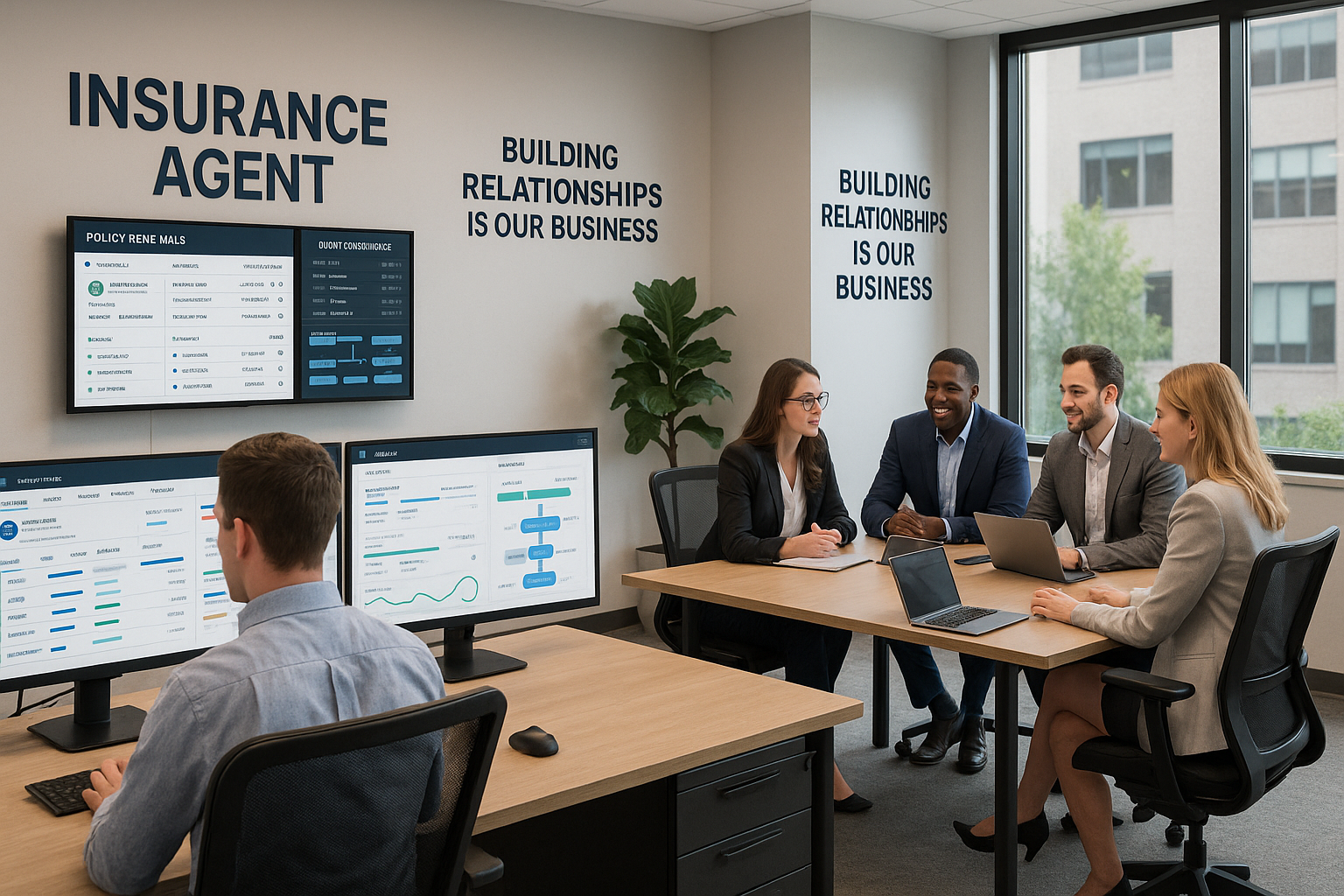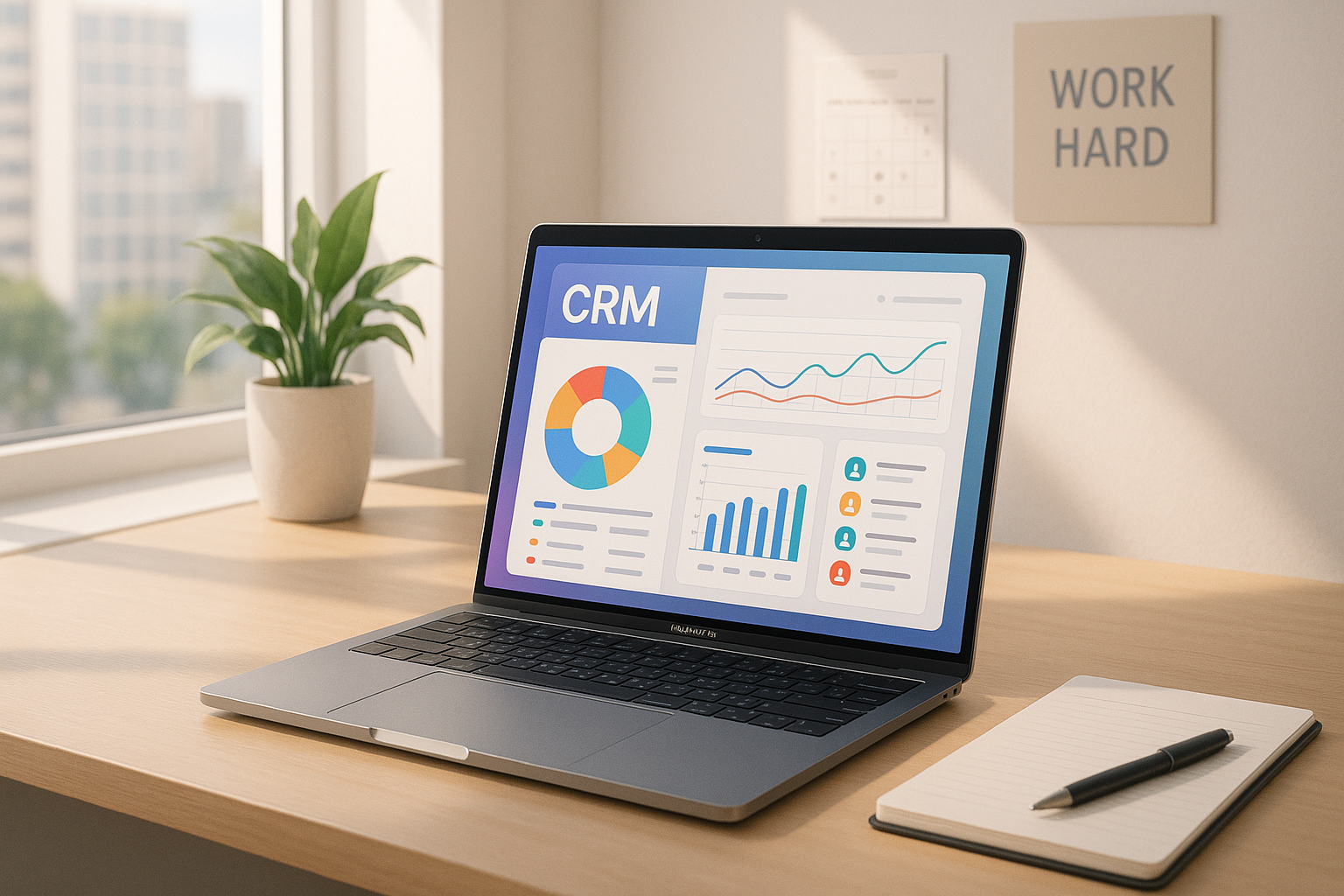Editor’s note: Today we are happy to present you an interview with Thomas Wieberneit, a digital transformation, customer engagement, CX, and CRM expert. Being a CEO of Epiconic and co-founder of aheadCRM, we asked him some questions about CRM, digital dialogue with customers, and business innovations based on his own experience. We are thankful Thomas for sharing his thoughts and very helpful tips for vendors who’s going to develop their strategies and advance business processes.
1. Could you share with us the 3 most exciting moments in your career?
Thank you for the praise Natalie. There surely are no secrets involved. Originally, back in 1995, I actually only stumbled into what became CRM by joining a company that did distributed sales force automation systems and later got acquired by SAP.
A lot of what you just called inspiration comes from day-to-day life. I want to help people and organizations. As customers we are surrounded by businesses and organizations on one side and technology on the other. Organizations, especially businesses, communicate with us and try to get and retain our loyalty increasingly using technology. Sometimes with, sometimes with less of a strategy. This often bothers us as customers and ultimately harms the businesses. Who of us does not have countless experiences of bad service, strange and perhaps intrusive advertisements, products and brands that do not live up to promise, …
Combining the topics of people, process, strategy and technology to solve problems and to find creative solutions is exciting.
2. Here question splits into two pieces:
a. Epiconiс helps companies to foster and develop a dialogue between company and customers. So, could you tell a little bit how the digitalized dialogue looks like? What can make the communication successful?
The dialogue can happen on and across different channels, with the phone being a very important one. Epikonic enables this by focusing on the customer’s point of view. There is no need for installing different apps when conversing with different vendors. Customers have a very easy way of tuning in to vendors if and when they are relevant to them. On the other hand, vendors have an easy way of communicating with their customers using different channels when it becomes relevant, by being able to use a lot of context, including time and location as well as a lot of possible triggers. These triggers e.g., include PoS transactions via an integration to the PoS system. Think of sending a brief mobile friendly survey directly after a transaction – or after leaving the store without a transaction; or sending the receipt to the phone, updating loyalty information right away and much more. Campaigns can become extremely rich, personal, and relevant. Communication can involve social sharing by the customer and is visually rich.
The benefits for businesses include the ability to combine customer intimacy with reach in an easy to use system; and they do not even need to build an own app, which becomes more and more important as business apps are getting installed less and less.
Key for the businesses is to be authentic, consistent, relevant, and in context. Epikonic enables this.
b. aheadCRM offers consulting services to companies and supports their digital transformation. Could you please, share some examples of mistakes businesses do while using CRM?
A main culprit is that CRM is not taken up strategically but rather from a system point of view. Sincerely the whole notion of CRM is one of a system, not a strategy.
The usage the system is a consequence of what is implemented, and how it is implemented. But effectively there are still silos, like customer service not being integrated with marketing and sales, or even customer service being forced to use different systems for different scenarios. A not so big retail company that I know has two different CRM systems plus an ecommerce system that have all different support systems. You can imagine that the service agents have a lot of complexity to deal with.
Often Point of Sales-, loyalty-, and ecommerce systems are standalone, too. This leads to a very inconsistent view on the customer, which ultimately harms the business because the business is unable to serve their customers right.
Summarizing this the main issues are lacking process- and data integration. This prevents the organizations from effectively and efficiently turning data into actionable insights.
In a nutshell the core delivery of any digital transformation initiative must be to make life easier for employees and customers through the application of technology. It is about simplifying and automating processes so that the systems better help the employees and that the customers’ experiences with a company are easier and more consistent.
3. Are there some shared rules business owners should obey during setting up their solution?
I by far do not know everything, but see a few common threads.
Number one on my list is the concept of thinking big while acting small. In essence this means that a strong platform needs to be established that serves as a basis for continuous and frequent business improvements in a collaboration between IT and business departments. This is a huge task for all involved people, as everyone has their pet projects that are important to them. It is key to deliver value frequently. This is best done by establishing a process of frequent reassessment of the business priorities and to base investment/implementation decisions on the assessment results. This way it is possible to constantly adjust to changing strategic and tactical priorities. I sometimes call this business scrum.
Too many implementations still fail. This has numerous reasons, starting with not doing a proper requirements analysis and going on with not implementing the system/solution with the users and customers in mind but focusing on management and reporting. In between we see all sorts of project management challenges like feature creep, political timelines, lack of testing focus, no consideration of non-functional requirements, … the list could go on and on. Change management is often a topic that is not considered enough, this in two aspects. Firstly, it is paramount to implement a CRM initiative together with the people, secondly a CRM implementation is an underutilized opportunity to improve business processes.
Of course we as consultants and vendors need to also look into the mirror here. It is not unheard of that consultants’ skills get oversold or that the capabilities of a system are presented in a somewhat favorable light.
4.What innovations can help SMBs to succeed with social CRM? Are the approaches the same for SMEs?
Well, for a starter I think that the term ‘social CRM’ is a fad. Always was, although I used it myself. CRM inherently is social. In the same context I think that the distinction between CRM, CEM (Customer Engagement Management) and CXM (Customer Experience Management) is largely artificial and vendor driven. In my guest post ‘There is no customer experience without customer engagement’ to Paul Greenberg’s ZDNet blog I stated that “CRM’s role is to manage not the customer relationship, but to manage the business operations related to the customer. Its analysis capabilities turn data into insights. As such CRM is the foundation for good engagement and customer experiences across communication channels and touch points. Engagements and customer experiences feed data back to it to enable a virtuous circle.”
When it comes to helpful innovations one needs to think about several categories:
- Technology
- Delivery models
- Thinking
Unsurprisingly ‘as a Service’, mobile, in memory databases, and what is currently dubbed the ‘Internet of Things’ are the technologies that help a lot when it comes to having the ability to deliver exceptional customer relationship management. They foster business agility.
They are also imposing a risk if business- and IT departments do not collaborate and departmental solutions are implemented instead.
However, they lay the foundation the collection and rapid analysis of data in a timely manner – think of the advancing analytics capabilities, topics like predictive-, prescriptive and intent driven analytics, AI, machine learning – as well as the ability to bi-directly communicate with customers when it is useful and relevant: at the right time, right location, using the right channel, and with the right context.
Add to this the concept of value co-creation that embraces the fact that value is not generated by a business transaction but by the customers’ using a product or service.
This leads to thinking about customer journeys and touch points, which in contrast to earlier thinking are not starting with the first interaction and ending with the sale, but stretch further out into both directions. It is important to see that customer journeys are neither premediated by companies, nor linear. Instead companies need to offer a menu of touch points that tie into each other. The actual touch points are then chosen by the customers. The sequence of touch points is different for each single journey, and not all of them are of equal importance to the customer.
The secret sauce for companies lies in distinguishing themselves where it matters, i.e. at the right touch points, the ones that define moments of truth. This then leads to hopefully positive, and lasting experiences, and then to loyalty.
Looking a bit further into the future I think that augmented and virtual reality as well as improved analytics capabilities and speech as the user/customer interface have a tremendous potential. These technologies need to mature but it would be wise to evaluate them already now and trial use cases to learn.
Does this all differ for SMBs and enterprises? Only gradually. Priorities may differ and the implementation approaches, too. But ultimately businesses small and large are looking for the same.
5. Thomas, being an innate strategist, could you give our readers some pieces of advice on creating reports and designing dashboards?
Analytics is a cornerstone of CRM, a sine qua non. Without analytics capabilities there is no way of turning data into actionable insights. Reports, dashboards, etc., need to rely on KPIs, which in turn need to be built in a way that they meaningfully bubble down/aggregate up through the company. After all they form a pyramid.
There is not the one and only set of reports and dashboards. Things depend on strategy and how to measure its execution. One rule of thumb that usually applies is that ‘simpler is better’.
Step one is to build the model of KPIs that shall be worked with; then visualize it, taking user authorizations and what is important for them into account. Allow for drill-down abilities so that it is possible to understand cause-effect chains. In combination with real time data this then allows for swift adaptations to any given situation.
What to not do? Things that are either not ethical or simply illegal, for a start. Also, It is possible to antagonize employees and customers by the data that is collected and how it is used. Creating the impression of creepiness should be avoided.
6. Could you give some general tips how to ensure CRM security?
Yes, security is vital, privacy, too.
Security is a multi-layered challenge that one can control using authorization models and firewalls. A main organizational challenge lies in having not too many places to maintain authorizations, ideally only one (ok, that is often a dream), and to have authorizations enabled or disabled efficiently. The problem is often less technology rather than process. In some organizations e.g. e-mail still works long after an employee quit. They might not be able to send e-mails anymore because the login expired but if the inbox is still active then mail forwarding rules can expose information that should better be kept internal.
When it comes to data security and the cloud I continuously tell clients that there are only very few businesses that can be as good as a SaaS vendor. The latter have far more experienced and knowledgeable personnel than the former can meaningfully employ. After all security is part of their core business. This is an argument that more and more gets understood although there is always this fear of being dependent – and then, of course, the vendors do not give guarantees, too.
Can there be total security? No! Even the NSA got hacked recently.
Related to security is privacy. Businesses are well advised to also not share their customers’ data further than absolutely necessary or use it further than absolutely necessary. Clear and concise privacy statements that can be understood by customers without asking their lawyer will help here, too.
7. Сan you advise some blogs and books worth to read, and conferences worth to visit?
A conference that is always worthwhile visiting is the CRMEvolution, which in the past years was chaired by Paul Greenberg, along with its sister conferences CustomerServiceExperience, chaired by Esteban Kolsky and Speechtek. If there is budget for one conference only and one wants to attend a vendor independent conference, this is the one to attend. Constellation Research’s Connected Enterprise could be worth a shot, too, though. If one wants to stay on top of a particular vendor, they are all having their own conferences.
Both, Paul as well as Esteban are persons to seriously listen to. I feel honored to know them. Read Paul’s CRM at the Speed of Light and wait for his new book – I certainly do.
Then there are Ray Wang from Constellation Research, Brian Solis from Altimeter whose blogs and books are on the must read list. Of course Gartner and Forrester have established analysts, too, just thinking of Michael Maoz and Kate Leggett, to name but a few. Add persons like Brent Leary, Mike Boysen, Wim Rampen, Denis Pombriant, Graham Hill, and a few more. Down here in New Zealand we have Chris Bell, who one should listen to when it comes to customer experience topics. And then there is Bob Stutz, who doesn’t speak out publicly that often but who shaped Siebel CRM, SAP CRM, Microsoft Dynamics, and now heads the analytics cloud at Salesforce – which in clear words spells out the direction of CRM.
Many thanks to Thomas for the interview! You also can drop Thomas a line at @twieberneit.
In case some questions are upcoming – feel free to leave a comment, we’ll be happy to answer and help you as soon as possible.
P.S. Have a strong need to migrate your current CRM? For more details, stop by here.





(2).jpg)